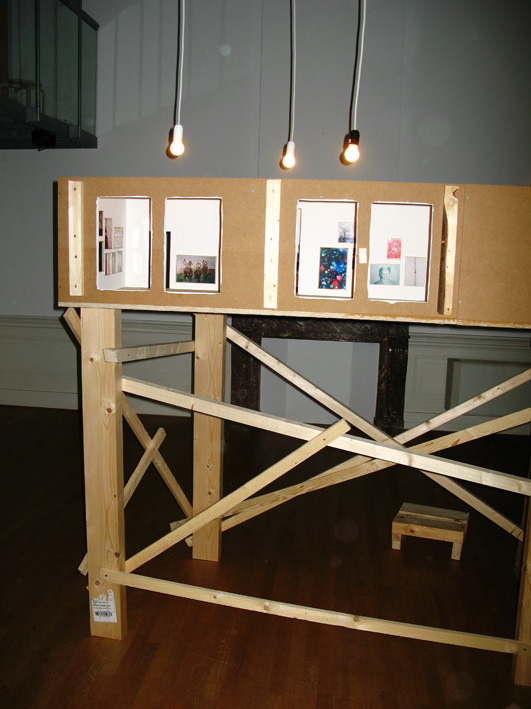Linus Bill Is the Zoolander of Photography

LINUS BILL’S INSTALLATION AT FOAM
Linus Bill isn’t really a photographer anymore, which must be disconcerting for the curators currently featuring his work at the New York Photo Festival, the Hyeres Festival of Fashion and Photography in France and the FOAM Fotografiemuseum in Amsterdam.
Asked to present his work at FOAM, the Bienne, Switzerland-based Bill didn’t ship the museum a batch of framed glossy color images. He showed up with carpentry tools. “We built a model in the space on a scale of one foot for 10 feet–it was a miniature model of an exhibition,” he says. And even though he filled his tiny gallery with postage stamp-sized photos, “It wasn’t even about the images.” The approach wasn’t what he had originally intended for the exhibition, but rather, a solution that appeared to him at the spur of the moment. “I didn’t like the room they gave me for my exhibition, but I liked other rooms in the museum. So I built a miniature model of those other rooms. It was such a stupid idea because it was so much work….But when I send people the installation shots, everyone thinks it was a big exhibition. So it worked!”
There was a downside to creating an exhibition intended to confuse the Derek Zoolander in all of us. “Once you do everything small, you have unlimited options because you don’t have to worry about the cost of printing,” Bill says. But his projects have long had a do-it-yourself ethic: A few years ago, he switched from straightforward documentary photography of his family and friends to abstract images. Bill creates a collage effect by layering mono-color and black-and-white silkscreens and computer print-outs of his photographs, filling the wall a cheery array of images.
Bill says he stumbled across this deliberately unfinished approach in part because he was terrible at printing his own photographs. “My friend had a small printing machine that would only do rough mono-color prints,” he recalls. The mimeograph-style printer “Wasn’t meant for photographs, but I really liked how it looked. The images were so simple once they had been brought down to one color. It was more superficial, maybe, but it took them away from the real world and more into my own world.” Suddenly snowflakes looked like red or blue polka dots and “It was more about the image itself and not so much about the subject [of the photograph].”
From there, he was off and running, tacking images up on gallery walls and printing a series of deliberately lo-fi zines with Nieves and Rollo Press. “Until I made those silkscreens, I was never satisfied with how my work looked as prints. I always ended up showing laser copies or inkjet prints. With the silkscreens, you really work with color. It’s dirty and there’s mistakes that sometimes look better than what you planned.”
THE HYERES PHOTO FESTIVAL OPENS APRIL 30.






